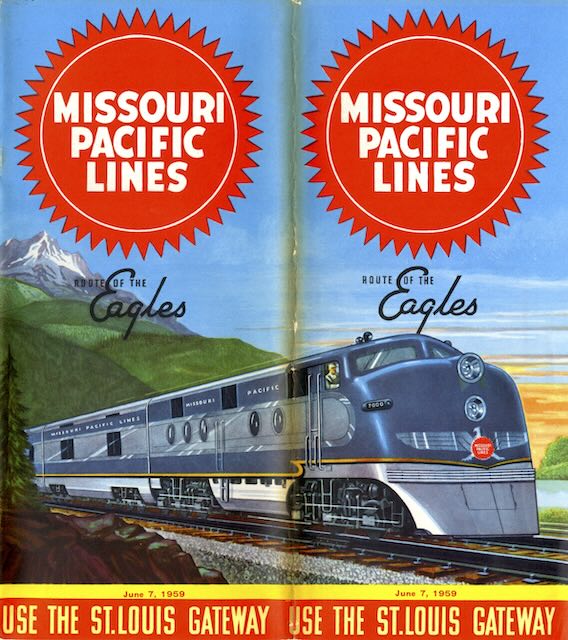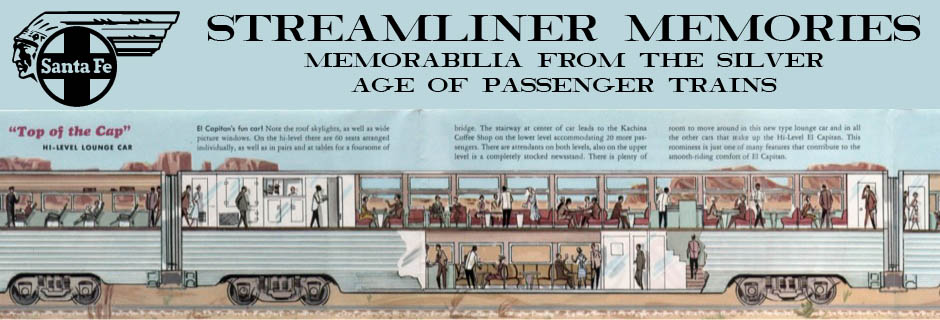This edition of the MP timetable has four-color images on the outside and inside front and back covers, but like yesterday’s, the centerfold map no longer uses four colors. Indeed, it is strange that the centerfold map of Monday’s December 1957 timetable continued to use four colors.
 Click image to download a 20.9-MB PDF of this 40-page timetable.
Click image to download a 20.9-MB PDF of this 40-page timetable.
The revised map is based on various shades of yellow and grey. Some of the states are distinguished from their neighbors only by having slightly lighter yellows, which doesn’t work very well. The boundaries between Colorado and Utah, Iowa, Nebraska, and Illinois, and Arkansas, Louisiana, Oklahoma, and Tennessee are difficult to discern. The map is still signed Crawford C. Anderson, but I suspect someone else did the poor job of coloring.
Interesting articles about the history of town names, various cities along the MP, or historic sites are completely absent, having been replaced by more traditional ads. A full-page ad promotes trains from Houston to Brownsville. Another notes that coach passengers can have meals served at their seats, which to me sounds more like a bug than a feature. After all, during a long trip it’s nice to be able to walk to the diner or lounge for a meal.
The inside front cover ad announces Thrift-T-Sleeper service, which offered Colorado Eagle passengers sleeping car comforts for the price of coach plus a reduced fare for the bed. An upper berth from St. Louis to Denver cost $2.50 more than coach fare while a lower berth was $6.00 more. Normally, the Pullman fare was $10 more than coach plus an additional $8.65 for an upper berth and $11.45 for a lower.
Passengers could thus save $15.45 on a lower berth or $16.15 on a lower. Multiply prices by ten to get approximate current values. The ad says these fares were available for 8 sections, 1 drawing room (which was $15), and 3 bedrooms (which were $12); after those were sold, the regular rates applied.
This was apparently an attempt to emulate the Slumbercoaches being used on the Burlington, Northern Pacific, and a few other railroads without having to actually purchase new equipment. Because so few berths or rooms were available, however, it really amounted to bait and switch.
